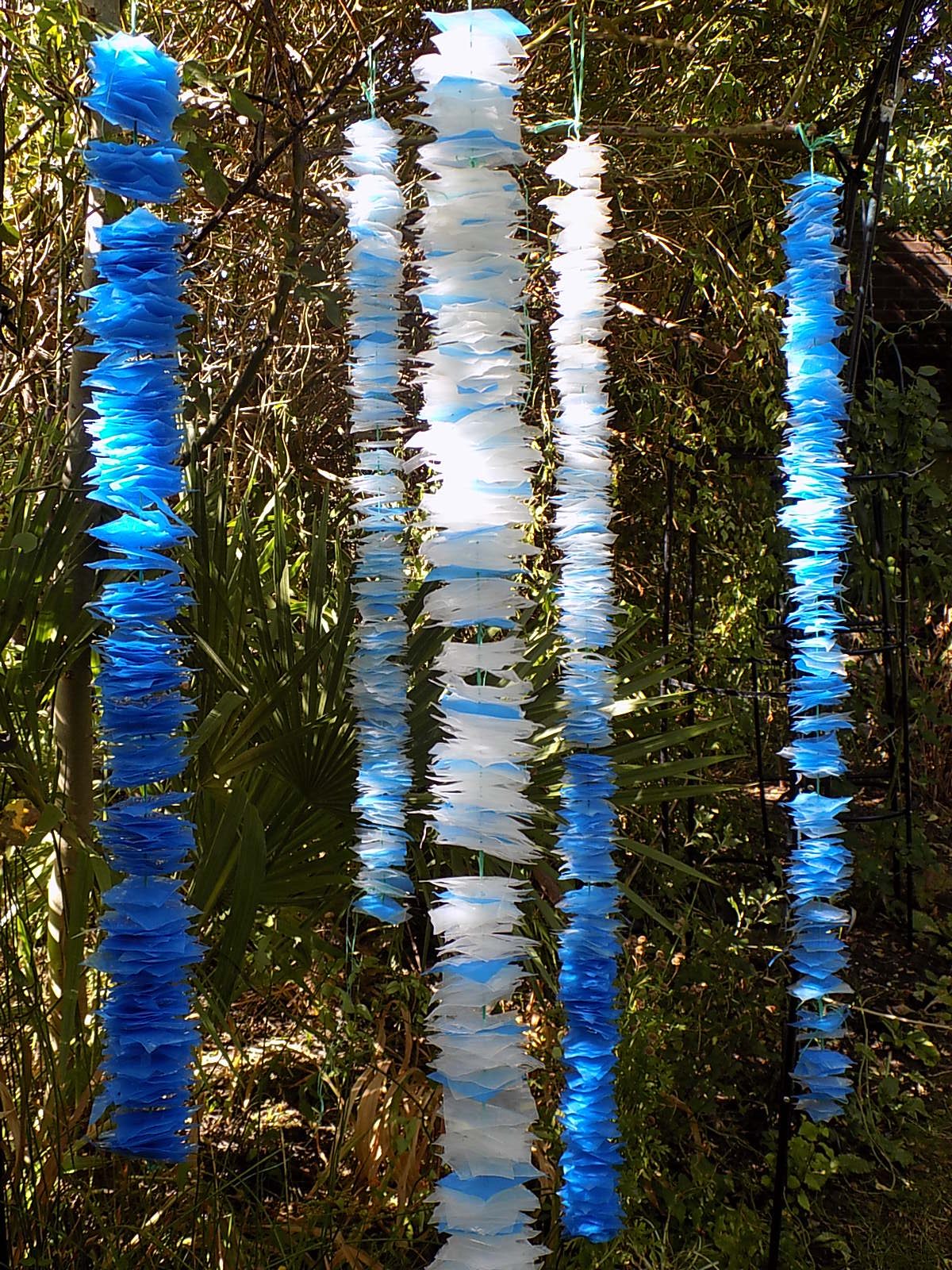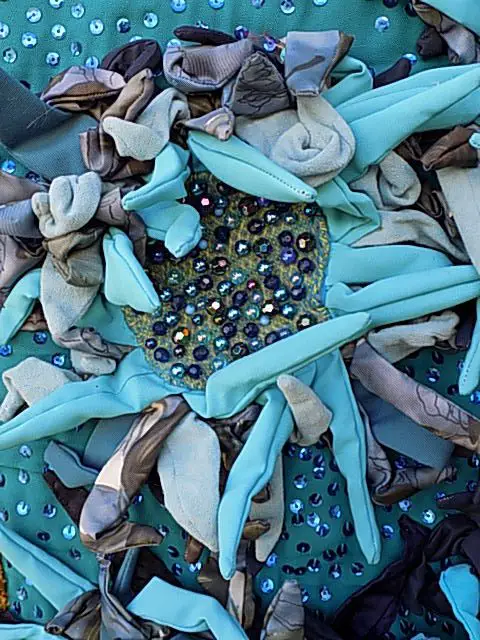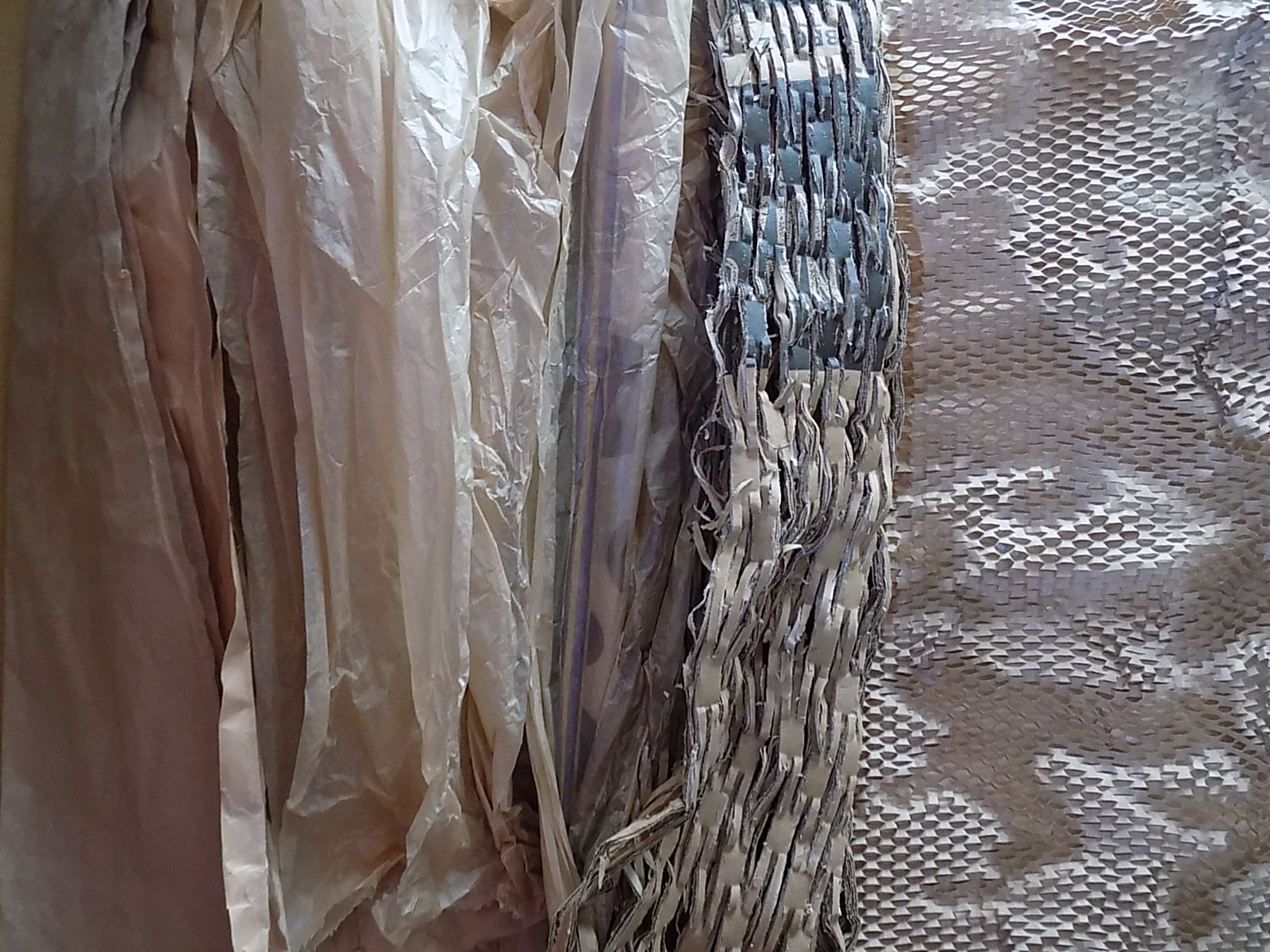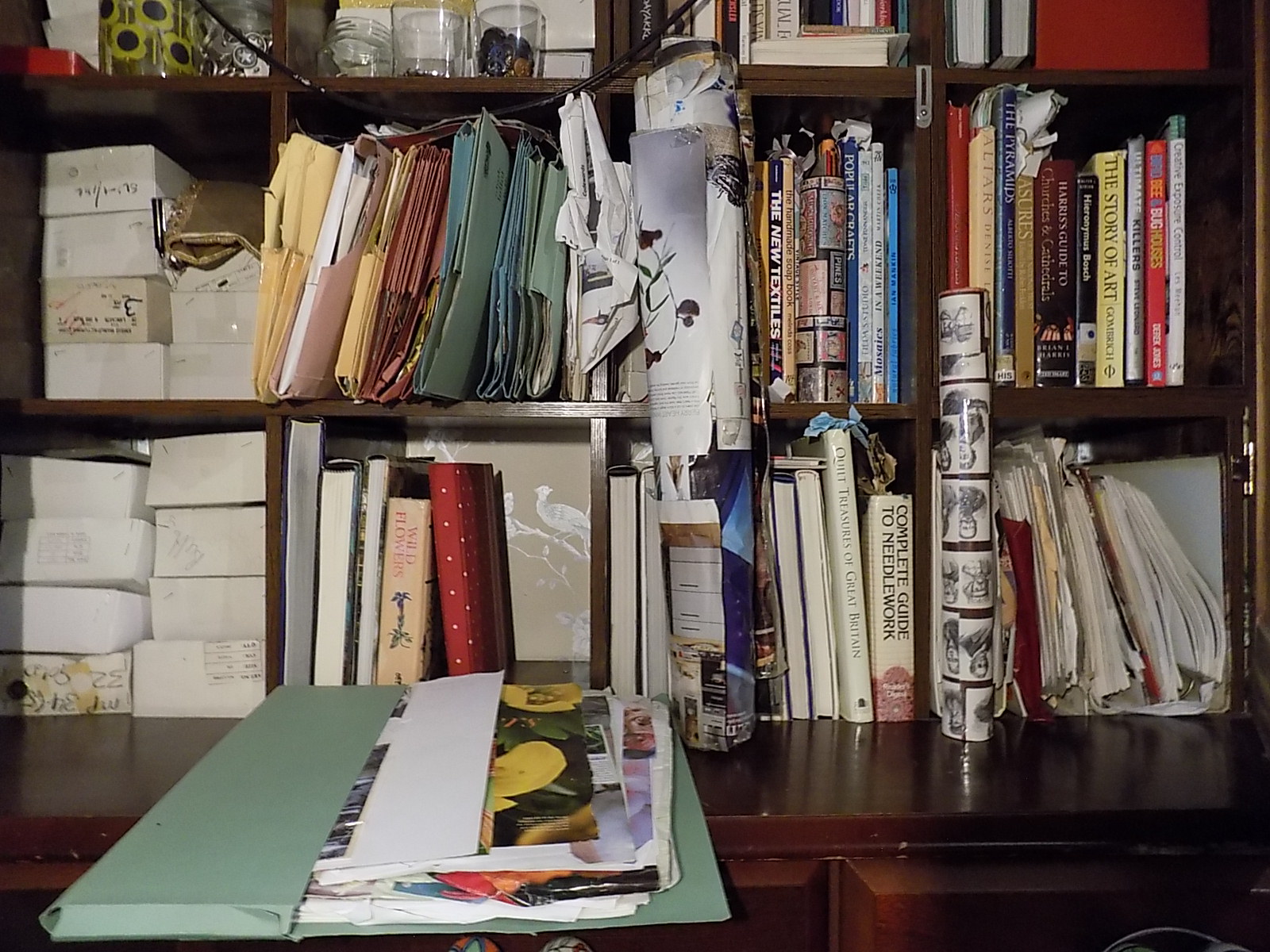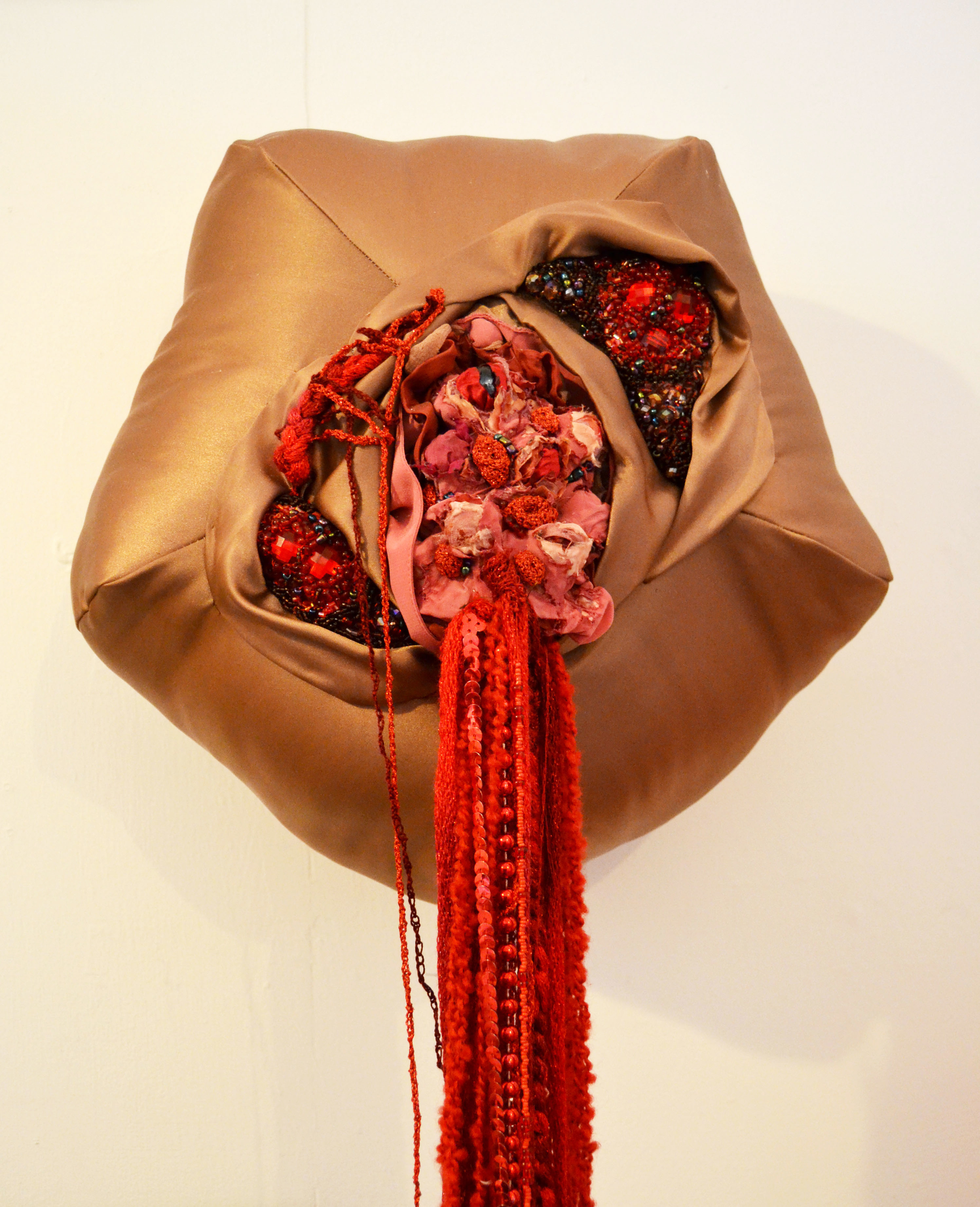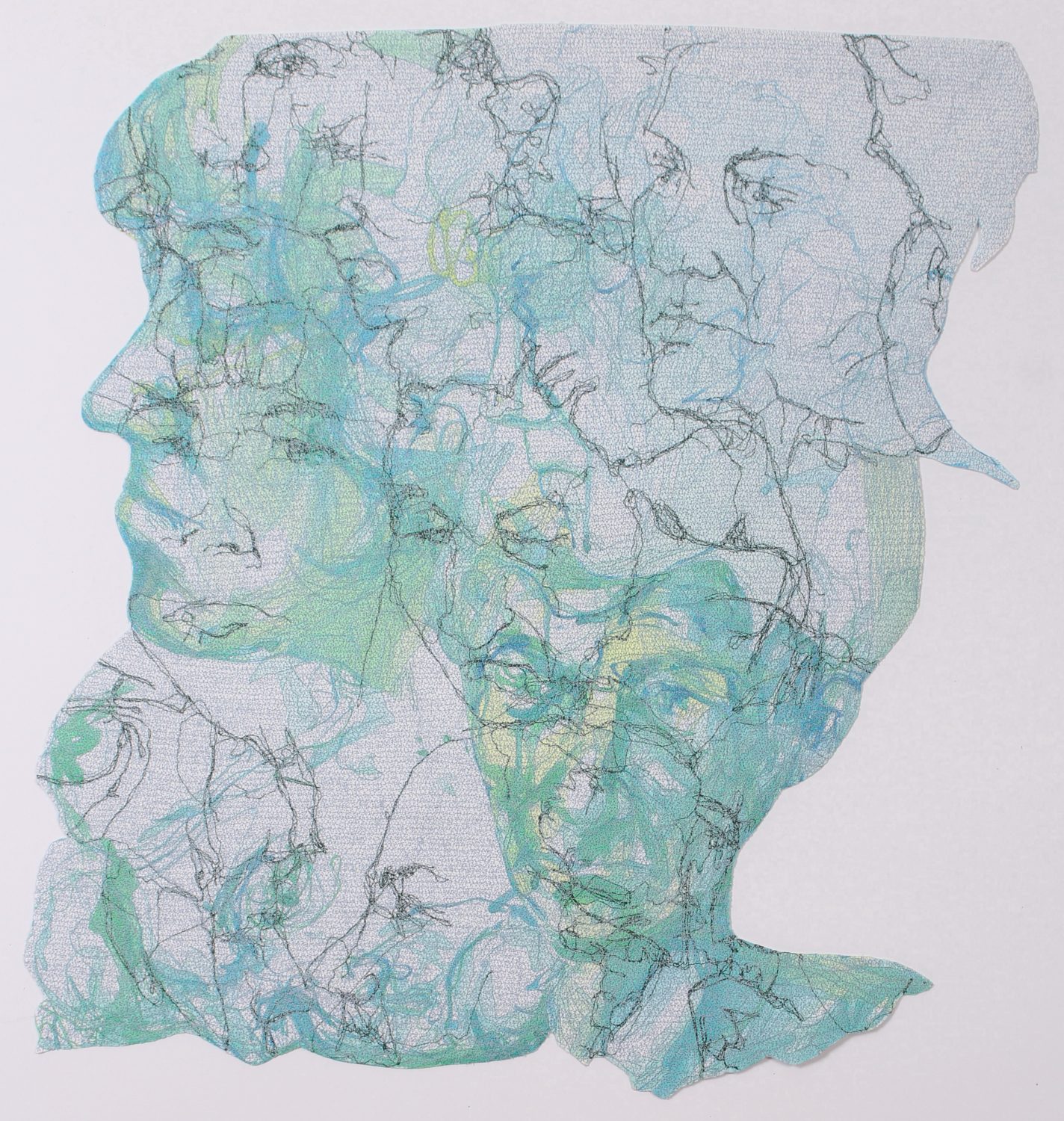Welcome to Beneath The Folds, where Christine Cunningham explores the creativity of textile art, from inspiration to technique.
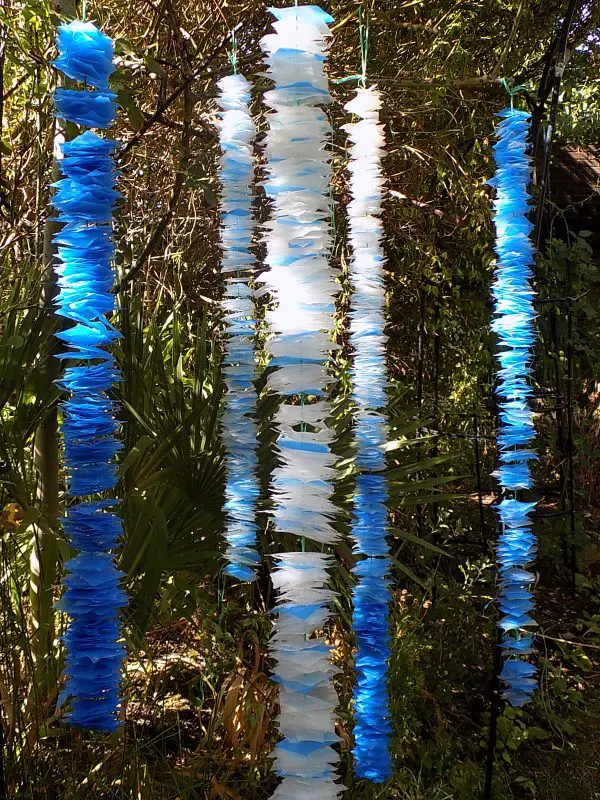
I have been collecting Amazon food freezer bags during COVID with the intention of recycling in my textile work. Having drained the liquid, washed and hung them out to dry I realised the water couldn’t escape the plastic pockets and so I couldn’t dry them to use with fabric. I was inspired to create garlands for the garden.
Here is a guide.
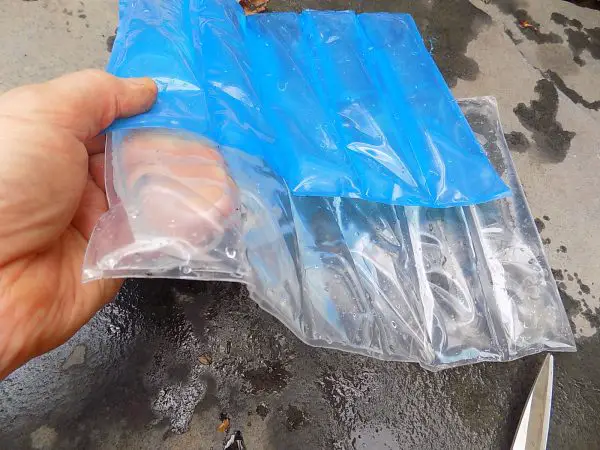
Preparation
- Defrost, pierce pockets and drain liquid.
- Cut freezer bags into half and then half again.
- Cut into squares.
The original cuts made to pierce the pockets will determine a natural guide. Roughly cut sizes will add interest and dimension. The double layer pockets provide a strength to the structure.
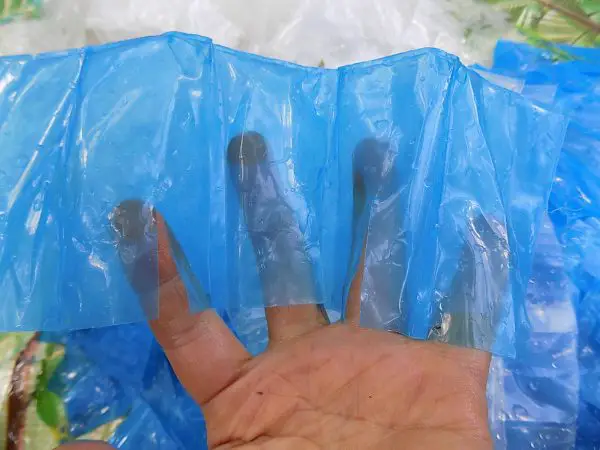
Colour
I now have two colour dimensions. The blue represents the intensity of our heatwave with vibrant summer skies. The white is the heavy downpour we have all been waiting for.
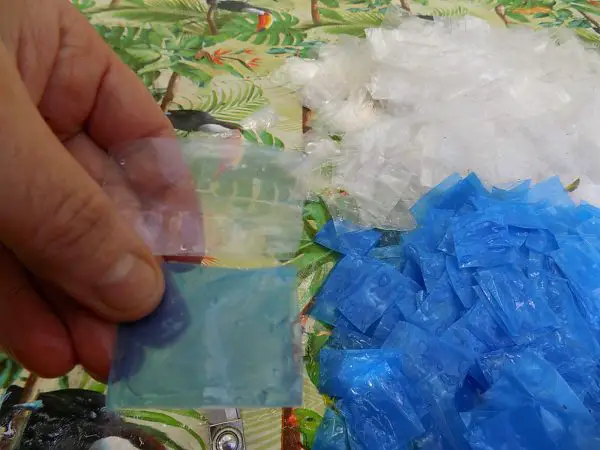
Threading
The intensity of layered colour will become apparent when you start threading the squares onto the nylon garden twine. Cut lengths to the desired size and knot the end. The eye of your needle will have to be big enough to not fray the nylon as you add your plastic squares.
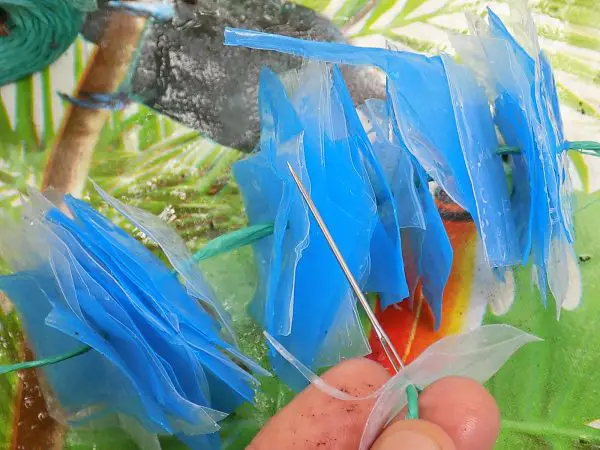
Ratio
Now start adding your squares. Play around with ratio of colour. I have developed variations diluting the intensity of blue. 1:1, 1:3, 1:5, 1:10, 1:15, 1:25 and all blue with the remainder I had.
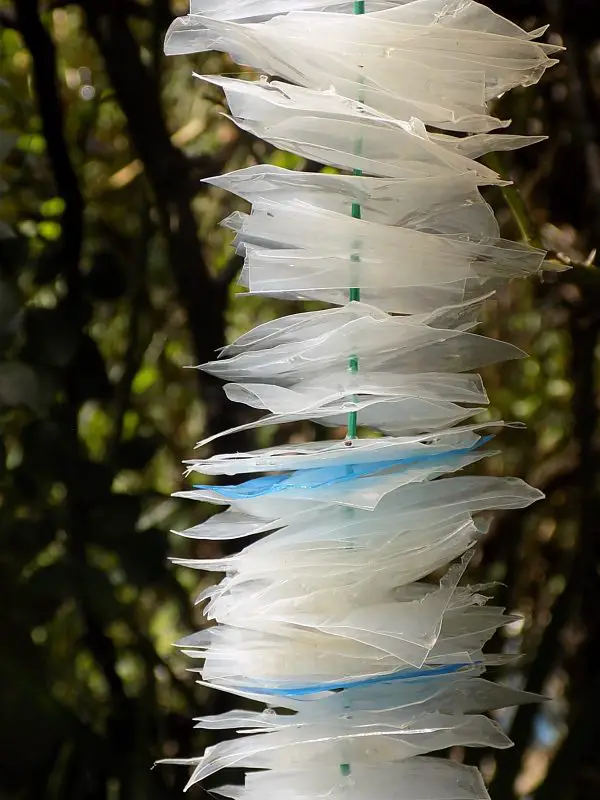
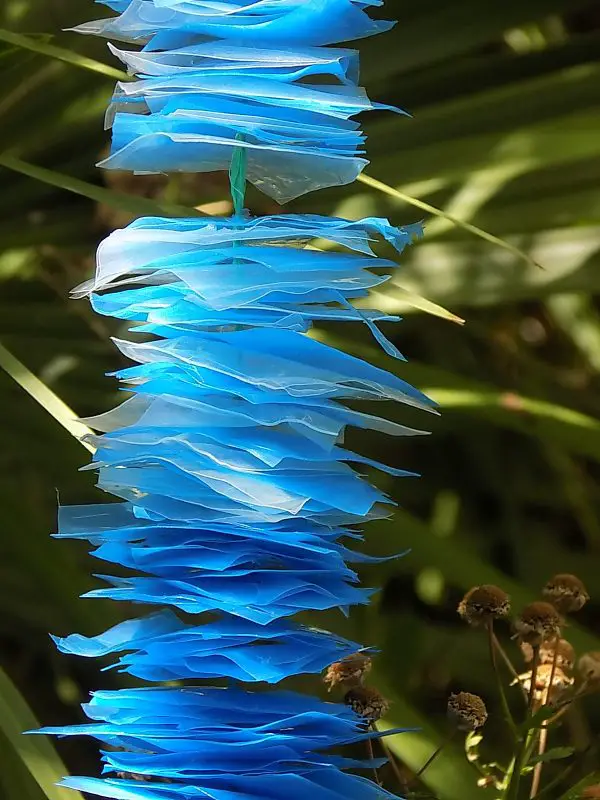
Rhythm
I am randomly adding any sized square I come across for a rough and natural effect. This determines a rhythm and shape to your garland. Some areas are tightly packed as I speed up the process, enhancing colour. Irregular spacing between squares adds interest and allows light to penetrate between the layers.
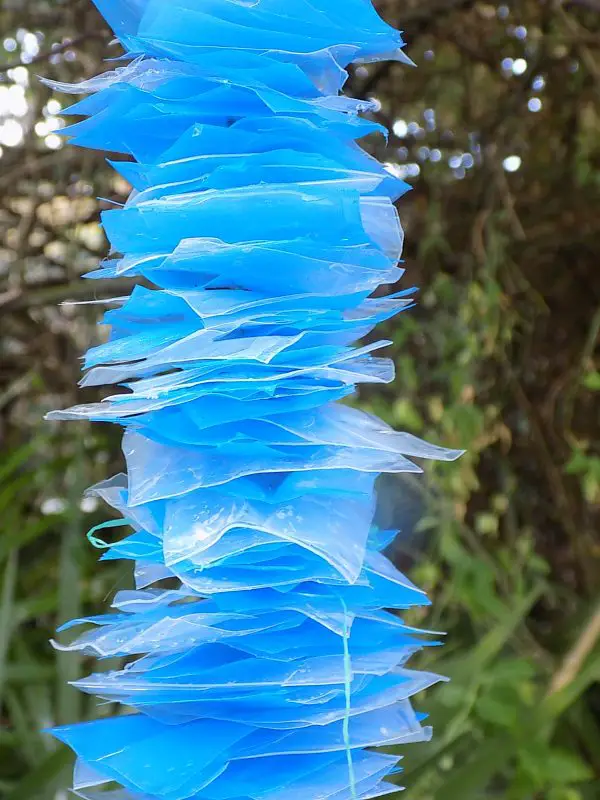
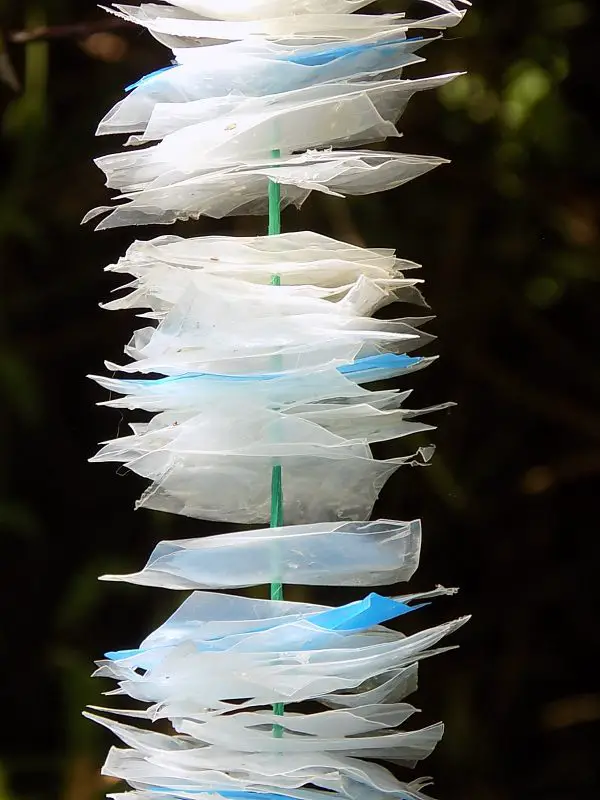
Light
Plastics are light reflective and the white particularly transparent. The blue is a dense block of colour. The more white I build the more enhanced with light it becomes.
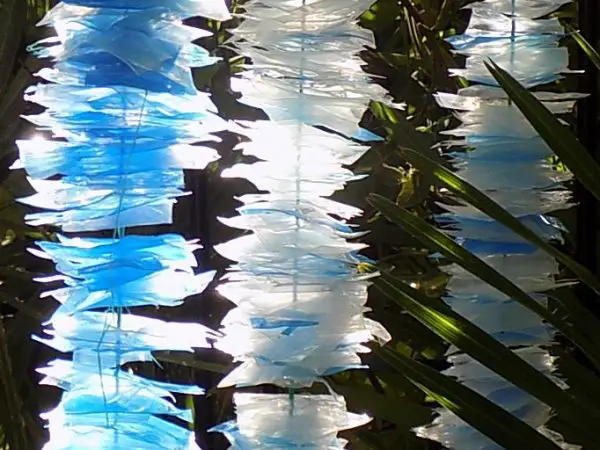
Texture
Shredding along the shaft of nylon will occur as you thread your plastic, adding interest and texture. Any leaves will adhere naturally if the plastic is wet. I particularly enjoy the raw edges where plastic has torn.
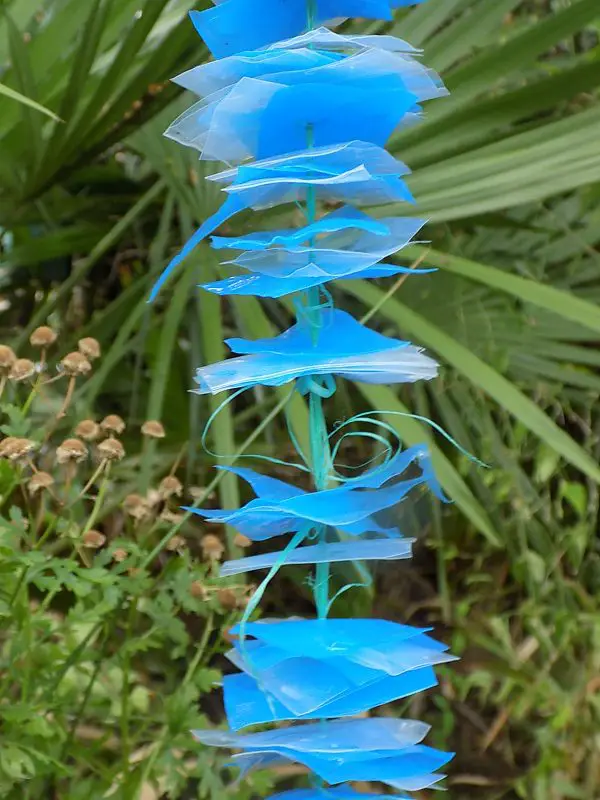
Weight
As you complete your garland the weight of the layered plastic will create a naturally weighted structure to hang and be blown in the breeze.
Display
Hang your garlands where they can be viewed from a window and be admired. Any tree and rose branch overhead will allow enough height for wind to create a mobile hanging. These fun mosaics remind me of Christmas decorations I created as a child, threading silver milk bottle tops onto string for the Christmas Tree. The colour palette reminds me of long summers, seaside escapades and beach holidays in the North East of England. It is a fun addition to any outdoor space and would be a great project for children who can use a needle.
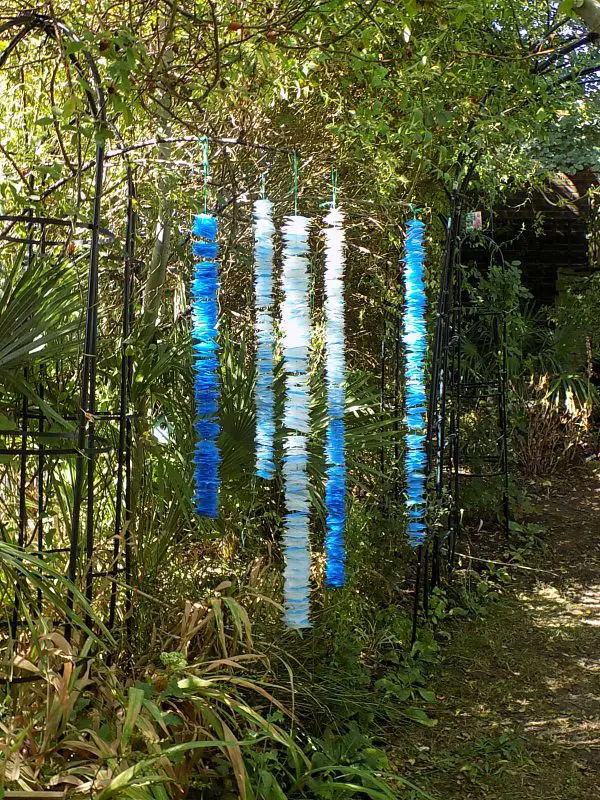
Recycling Plastics
I love to recycle plastics into my work. It creates colour and texture, transparency and density through layering, is light reflective and a durable material. The type of plastic varies the effect. Some are solid and flat while others are versatile and can be molded. I will continue to collect and use plastics in my work. Y
ou can find more information on my website with examples of textiles here. If you like to read about artists who use other methods of recycling to create textile art, please read this piece on Valeria Faundez or this one on textile panels and how to create them yourself!

